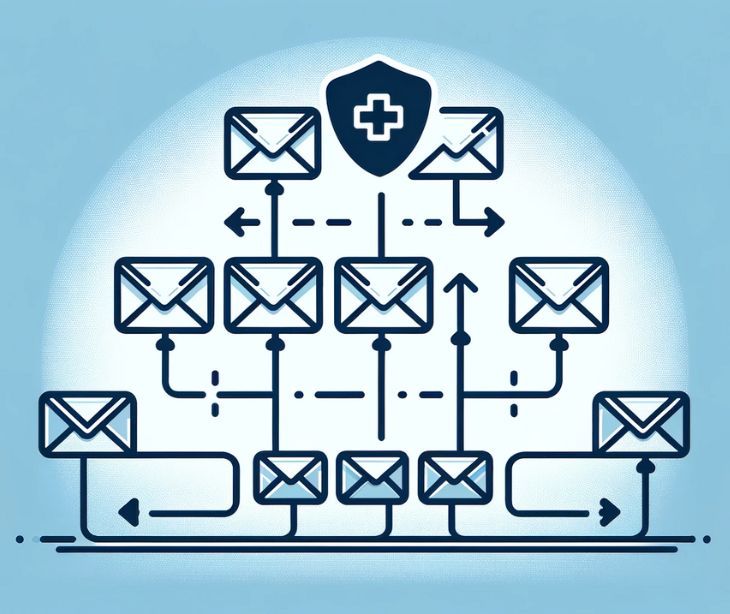
When patients trust their provider, they are more likely to share details about their health. In primary care where the patient provider relationship is that much closer, it makes it all the more necessary for effective communication.
The function of communication in primary care
According to a journal article published in the Annals of Internal Medicine, “Providing whole person care that primary care physicians integrate is the distinguishing characteristic of a primary care system.”
Communication in primary care involves a direct and ongoing exchange of information between healthcare providers and patients. The process typically starts with the patient sharing their symptoms, concerns, and medical history during a consultation. The healthcare provider listens attentively, asks relevant questions, and provides clear explanations.
Throughout the visit, both verbal and nonverbal communication are key. Providers may use simple language, visual aids, or written instructions to ensure that patients fully understand their diagnosis, treatment options, and any follow up steps. Effective communication requires active listening, empathy, and a collaborative approach, fostering trust between the patient and the provider.
The purpose of communication in primary care centers around building a strong patient provider relationship, ensuring that patients are fully informed about their health, and empowering them to make decisions about their care. Clear communication helps providers accurately diagnose conditions and develop effective treatment plans. It also allows patients to express their concerns and preferences.
See also: Low context communication, a common concept in email
Urgent v detailed communication
Urgent communication in primary care focuses on addressing immediate health concerns that require prompt attention. This type of communication often involves brief, direct exchanges between the healthcare provider and the patient, aimed at quickly assessing the situation and providing necessary instructions or interventions. For example, if a patient experiences sudden symptoms like chest pain or severe allergic reactions, the provider may use phone calls or urgent in person visits to assess the situation and recommend immediate actions. Urgent communication prioritizes speed and clarity to ensure that the patient receives timely care.
Detailed communication, on the other hand, involves more in depth discussions about a patient’s health over time. It typically covers topics like chronic disease management, treatment planning, and lifestyle changes. These conversations require more time and often involve sharing extensive information and asking and answering questions. Detailed communication usually happens during scheduled in person visits or through secure platforms like HIPAA compliant email, where the provider can thoroughly explain medical conditions, review test results, and discuss long term care strategies.
How to effectively provide detailed primary care communications using email
- Use secure, HIPAA compliant email platforms: When using email for detailed communications, always use a HIPAA compliant email platform. Before sending detailed information get the patient's consent and confirm the patient's email address.
- Structure the email clearly: Start the email with a clear and concise subject line that reflects the content of the message. For example, use "Your Diabetes Management Plan" instead of something vague like "Follow Up."
- Personalize the communication: Detailed primary care communication should feel personalized to the patient’s specific needs. Address the patient by name and reference their specific health conditions or concerns.
- Provide clear, actionable instructions: Detailed emails should include specific, actionable steps that the patient can follow. For example, if the email discusses a treatment plan, break down the steps: "1. Take your prescribed medication, Metformin, twice daily with meals. 2. Schedule a follow up appointment in four weeks to monitor your progress." Include timelines, dosage instructions, and any other necessary details.
- Encourage questions and follow up: At the end of the email, invite the patient to ask questions or schedule a follow up appointment if they need further clarification. Phrases like, "If you have any questions or concerns, please don’t hesitate to reach out," or "Feel free to reply to this email, and I’ll get back to you as soon as possible," encourage open communication.
See also: Top HIPAA compliant email services
FAQs
What is low context communication?
Low context communication is a straightforward communication style where the message is explicitly stated, relying less on context or shared understanding.
What is nonverbal communication?
Nonverbal communication refers to the transmission of information without words, using body language, facial expressions, gestures, and tone of voice.
Are medical results and treatment plans PHI?
Yes, medical results and treatment plans are considered protected health information (PHI) because they contain sensitive patient data related to health.
Subscribe to Paubox Weekly
Every Friday we'll bring you the most important news from Paubox. Our aim is to make you smarter, faster.



